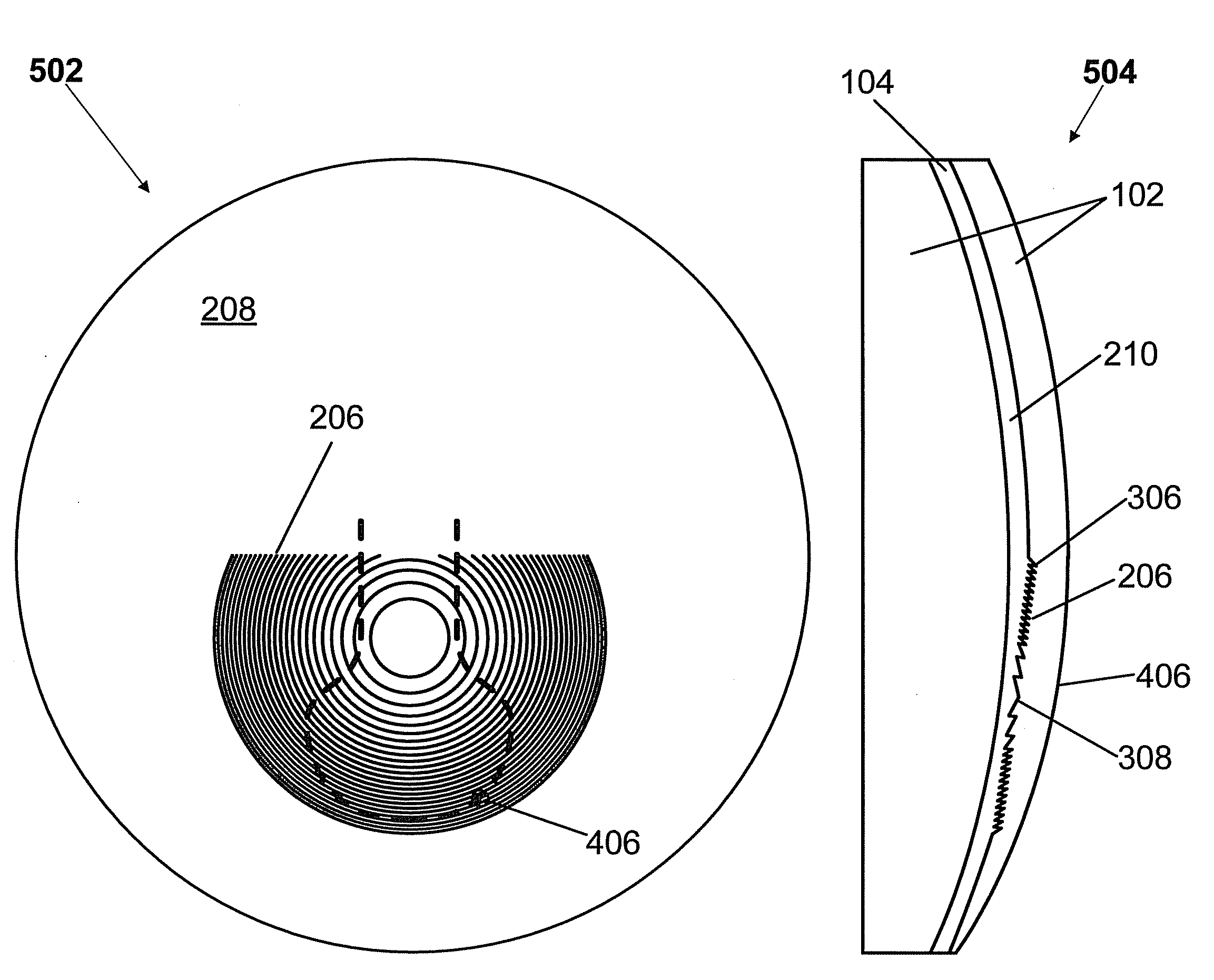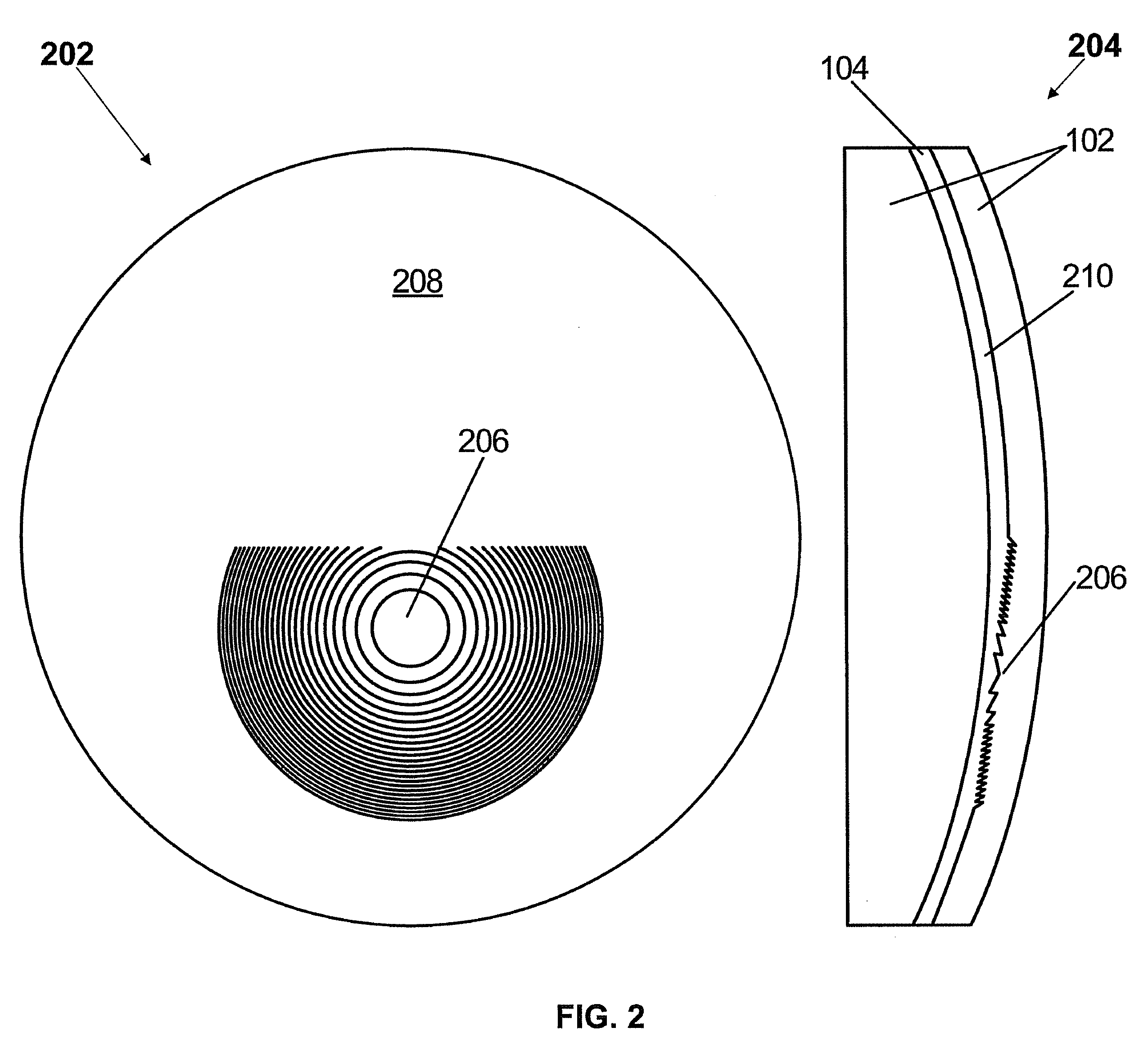Refractive-diffractive multifocal lens
a diffractive and multifocal technology, applied in the field of lenses, can solve the problems of reducing the visibility associated with multifocals, reducing the cost of rendering blend zones optically unusable, and affecting the use of lenses using diffractive optical structures,
- Summary
- Abstract
- Description
- Claims
- Application Information
AI Technical Summary
Benefits of technology
Problems solved by technology
Method used
Image
Examples
Embodiment Construction
[0020]Aspects of the present invention provide multifocal lenses having one or more multifocal inserts comprising one or more diffractive regions. A diffractive region of a multifocal insert of the present invention can provide a constant optical power or can provide a progression of optical power, or any combination thereof. A multifocal insert of the present invention can be fabricated from any type of material and can be inserted into any type of bulk lens material. A diffractive region of a multifocal insert of the present invention can be positioned to be in optical communication with one or more optical regions of a host lens to provide a combined desired optical power in one or more vision zones. Index matching layers of the present invention can be used to reduce reflection losses at interfaces of the host lens and multifocal insert.
[0021]A multifocal insert of the present invention can be applied to any type of optical lens or device including ophthalmic lenses such as, but...
PUM
 Login to View More
Login to View More Abstract
Description
Claims
Application Information
 Login to View More
Login to View More - R&D
- Intellectual Property
- Life Sciences
- Materials
- Tech Scout
- Unparalleled Data Quality
- Higher Quality Content
- 60% Fewer Hallucinations
Browse by: Latest US Patents, China's latest patents, Technical Efficacy Thesaurus, Application Domain, Technology Topic, Popular Technical Reports.
© 2025 PatSnap. All rights reserved.Legal|Privacy policy|Modern Slavery Act Transparency Statement|Sitemap|About US| Contact US: help@patsnap.com



